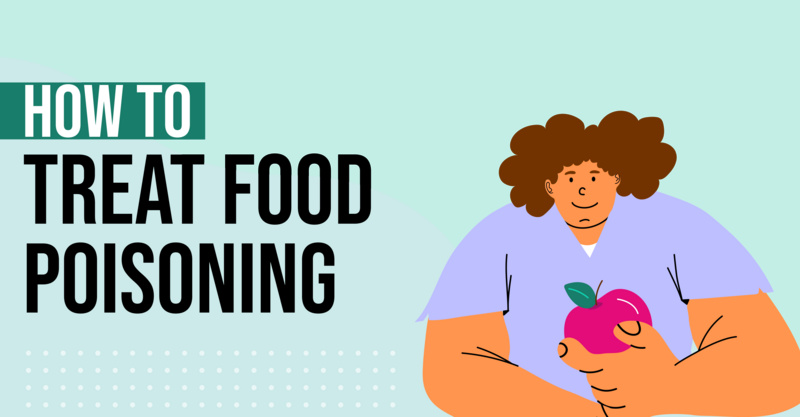Key Points
- The article discusses two heat-related illnesses: heat exhaustion and heat stroke, both caused by the body's inability to regulate its temperature in extreme heat.
- Heat exhaustion, characterized by heavy sweating, cool skin, dizziness, and fatigue, is caused by the body losing too much water and salt, usually through sweating.
- Heat stroke, a severe medical condition, is marked by symptoms such as lack of sweating, rapid heart rate, confusion, fainting, and headaches. It requires immediate medical attention.
- The risk of these illnesses increases when the heat index is 90 degrees or more, and factors such as living in urban areas, prolonged heat waves, age, certain health conditions, and medications can heighten the risk.
- Preventive measures include staying in cool areas, wearing light clothing, using sunscreen, and staying hydrated.
There are a few different heat related illnesses, including heat rash, heat cramps, dehydration, heat exhaustion, and heat stroke. The most serious of these heat related illnesses are heat exhaustion and heat stroke.
Heat exhaustion occurs when your body loses too much water and salt (typically from sweating)—heat stroke, on the other hand, is a serious medical condition that occurs when your body is unable to control its internal temperature, according to Healthline. The best way to distinguish between these two heat emergencies is to understand the symptoms of each and be able to tell the difference.
Heat Stroke
Heat stroke is the most serious heat-related illness, according to the CDC. It occurs when the body can no longer control its temperature. They note that during a heat stroke, the body’s temperature rises quickly, the sweating mechanism fails, and the body is unable to cool down.
During a heat stroke, the core body temperature can rise to 104°F or higher within 10 to 15 minutes, according to the CDC. Heat stroke can cause permanent disability or death if the person does not receive emergency treatment.
Heat Stroke Symptoms
Symptoms of a heat stroke, according to the CDC, include:
-
Headache
-
Confusion or delirium
-
Fainting or loss of consciousness
-
Hot, red, dry skin or lack of sweating
-
Elevated core body temperature (sometimes as much as 104°F or more)
-
Rapid and strong heart rate
Heat Stroke: What to do?
Seeking medical attention right away is necessary when dealing with heat stroke, according to the CDC. They recommend following the following steps:
-
Call 911
-
Move into a shaded, cool area and remove clothing layers if possible
-
Place cold wet cloths or ice on the head, neck, armpits, and groin, or soak clothing with cool water
-
Use a fan or air conditioner if possible
Heat Exhaustion
Heat exhaustion is a condition that occurs when the body overheats and is unable to regulate its temperature properly, according to the Mayo Clinic. They note that if left untreated, heat exhaustion can progress to a life-threatening heat emergency known as heat stroke.
Heat Exhaustion Symptoms
According to the Mayo Clinic, the symptoms of heat exhaustion can include:
-
Cool, moist skin with goose bumps when in the heat (also known as heat rash)
-
Heavy sweating
-
Faintness
-
Dizziness
-
Fatigue
-
Weak, rapid pulse
-
Low blood pressure upon standing
-
Muscle cramps (also known as heat cramps)
-
Nausea
-
Headache
- Dehydration
Heat exhaustion: What to do?
If left untreated, the Mayo Clinic explains that heat exhaustion can lead to heatstroke (a life-threatening condition). For this reason, it is important to recognize the symptoms of heat exhaustion and know what to do. If you or someone around you has the symptoms of heat exhaustion, the Mayo Clinic notes the following steps to take immediately:
-
Move out of the heat and into a shady or air-conditioned place
-
Remove tight or heavy clothing
-
Lay down and elevate your legs and feet slightly
-
Sip chilled water, a sports drink containing electrolytes, or other nonalcoholic beverages without caffeine
-
Continue the cooling process by spraying or sponging with cool water and fanning
-
Contact a healthcare provider if signs or symptoms worsen or if the person doesn't improve after taking first-aid measures.
Heat Exhaustion and Heat Stroke Cause
Hot weather and extreme heat is the cause of heat related illnesses, including dehydration, heat exhaustion, and heat stroke. The heat index is a measurement of how hot the ambient temperature feels when the humidity and air temperature are combined. This measurement can be a good predictor of extreme heat and how easily someone might fall ill with heat exhaustion, according to WebMD.
The risk of heat related illnesses, including heat exhaustion increases when the heat index climbs to 90 degrees or more, according to WebMD. Other things that they note increase your risk of heat exhaustion include:
-
Living in urban areas where extreme heat is more common
-
Prolonged heat waves, especially in areas of poor air quality
-
Age (infants, children up to age 4, and adults over 65 are more vulnerable to dehydration and heat related illnesses)
-
Certain health conditions (like heart, lung, or kidney disease, obesity, high blood pressure, diabetes, alcoholism, people who have sunburn, or people who have a fever), as these can make you more prone to dehydration or inhibit your ability to sweat
-
Taking certain medications (like diuretics, sedatives, tranquilizers, stimulants, heart and blood pressure medications)
-
Consuming alcohol
How to Prevent Heat Exhaustion and Heat Stroke
When the weather is predicting a heat wave or the heat index is high, WebMD notes that it's best to stay where you can be cool and comfortable (such as in an air-conditioned area). If you must go outdoors, they note that you can take the following steps to help lower your risk of heat exhaustion:
-
Wear lightweight, light-colored, loose-fitting clothing, and a wide-brimmed hat
-
Use a sunscreen with an SPF of 30 or more
-
Stay hydrated by drinking extra fluids (especially fluids with electrolytes like sports drinks)—avoid fluids containing either caffeine or alcohol
Urgent Care Near Me
If you have symptoms of heat stroke, the Mayo Clinic recommends that you get medical attention as soon as possible. Find an urgent care near you with Solv.
Frequently asked questions
How do I know if I had heat exhaustion or heat stroke?
The best way to know if you have heat exhaustion or heat stroke is to understand the difference between them and their symptoms. Heat exhaustion occurs when you get overheated—symptoms include heat rash, heavy sweating, feeling faint and dizzy, nausea, and headache. Heat stroke is a more severe condition when the body’s core temperature rises quickly and the body is no longer able to stabilize its temperature. Symptoms of heat stroke include headache, confusion, loss of consciousness, lack of sweating, high body temperature, and rapid heart rate.
How long does it take to recover from heat exhaustion?
According to Mount Sanai, recovering from heat exhaustion usually takes 24 to 48 hours.
How long can heat stroke last?
According to the Cleveland Clinic, a heat stroke can be fatal if you do not seek treatment right away. Recovery from heat stroke can take several weeks.
How do you fix heat stroke?
The CDC recommends the following the following steps if you have symptoms of heat stroke:
- Call 911
- Move into a shaded, cool area and remove clothing layers if possible
- Place cold wet cloths or ice on the head, neck, armpits, and groin, or soak clothing with cool water
- Use a fan or air conditioner if possible
Solv has strict sourcing guidelines and relies on peer-reviewed studies, academic research institutions, and medical associations. We avoid using tertiary references.


 LinkedIn
LinkedIn









